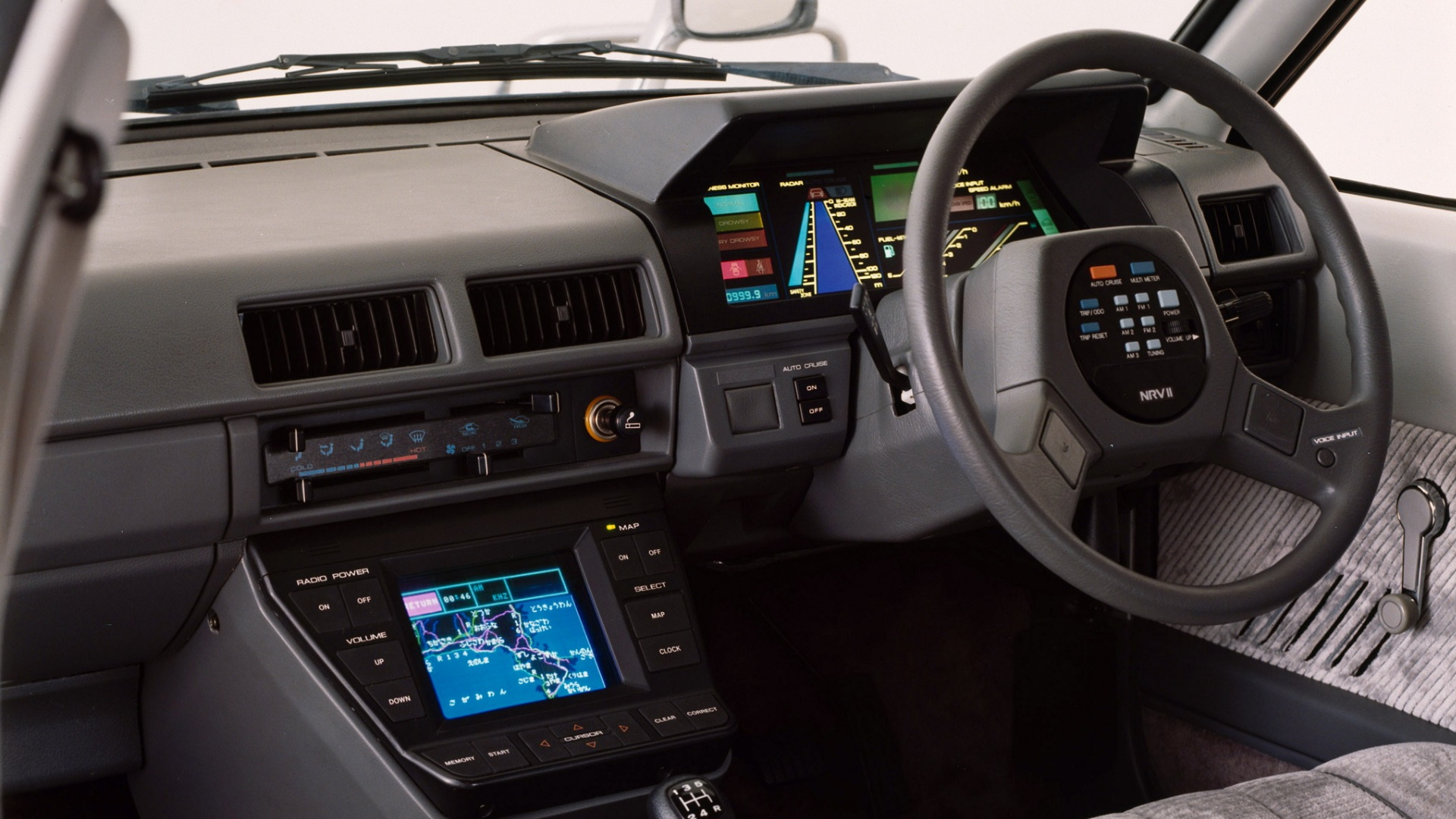

We may earn revenue from the products available on this page and participate in affiliate programs. Learn more ›
With compact digital displays just coming into their own, the 1980s were an interesting period for automotive interior design. Sweeping analog tachs could be replaced with stylish, dynamic interfaces, dripping with fabulous color and bold words like TURBO, and CRUISE. Squared-off buttons and sliders gave the driver tactile control of everything in the vehicle, putting all of its systems at their fingertips. Oldsmobile even offered touchscreens.
All of this tech came as a result of automakers looking into the future of the way we interact with cars, however, the interfaces weren’t the only things getting the brainpower of creative designers and engineers, especially at Nissan. In 1983, the company revealed the NRV II concept, a chiseled block of the automotive ’80s complete not only with period-defining aesthetics—take a look at those wheels—but a slew of driver assistance tech that, while totally non-functional, predicted many of the convenience and safety features that we take for granted today.







A closer look at the digital dash will give you an idea of what features on cars today were dreamed up back in the 1980s. Drowsiness detection, radar cruise control, voice commands, and more. Also present in the interior is a touchscreen CRT display in the center stack similar to those now commonplace on cars today. It was—at least as a concept—capable of navigation, telling the time, and displaying radio stations. It’s to be noted that GPS wasn’t available yet when this concept was released, which makes this sort of system especially optimistic. Your best bet at the time if you wanted navigation would be something like Honda’s Electro Gyrocator.
One thing this vehicle didn’t get quite right however was the engine. It was a turbocharged four-cylinder unit that ran completely on methanol. At 1.3-liters, it made 118-horsepower—impressive for a 1.3-liter in the ’80s, but not really great by today’s standards. Ford’s 1.0-liter Ecoboost, for instance, makes 125 horsepower without running on alcohol.

But that’s just a small speedbump in this car’s foresight. Predicting things like drowsiness detection, GPS, and radar cruise are great, especially when all lumped into the same car. It’s especially great when all of these features have now made it into the vehicles we drive every day.
Got a tip? Send us a note: tips@thedrive.com
